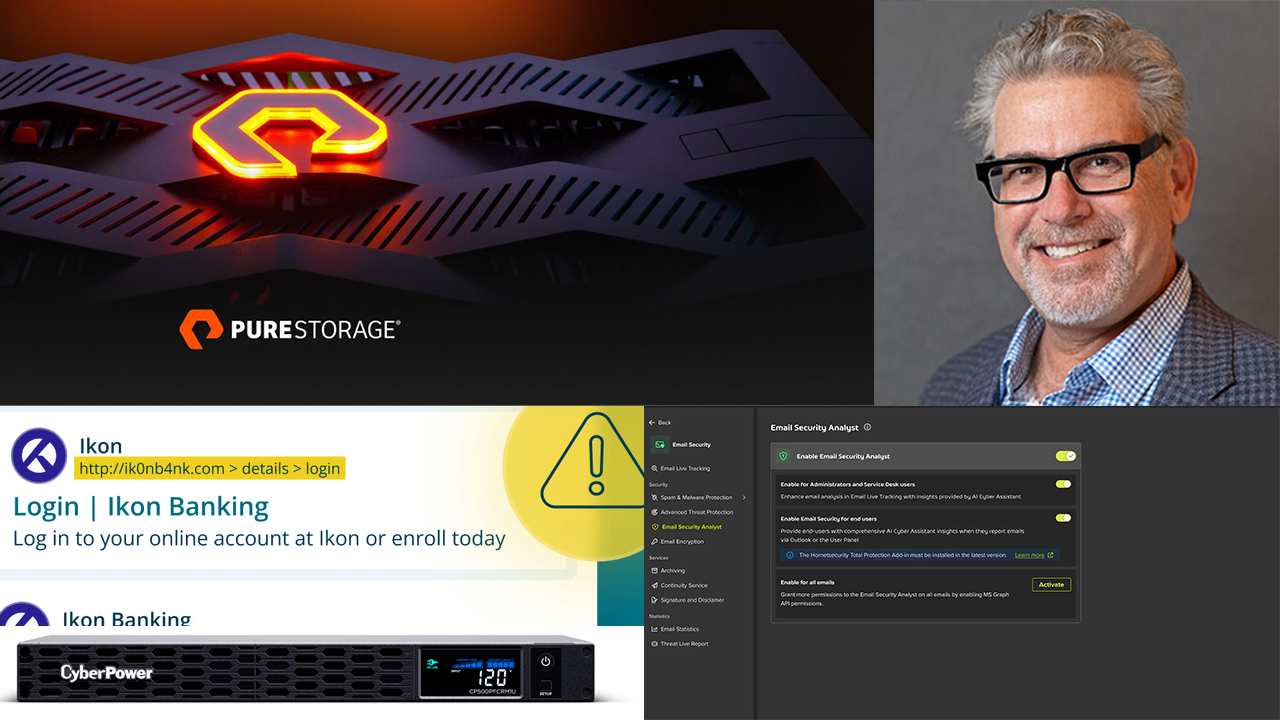Red Hat, Inc. (NYSE: RHT), the world’s leading provider of open source solutions, has announced Red Hat OpenStack Platform 14, the latest version of Red Hat’s massively-scalable, cloud-native apps-ready Infrastructure-as-a-Service (IaaS) solution. Based on the OpenStack “Rocky” community release, Red Hat OpenStack Platform 14 more tightly integrates with Red Hat OpenShift Container Platform, the industry’s most comprehensive enterprise Kubernetes platform, bringing even more support for Kubernetes to enterprise-grade OpenStack. Paired with capabilities to improve bare-metal resource consumption and enhance deployment automation, Red Hat OpenStack Platform 14 aims to deliver a single infrastructure offering that can lay the foundation for traditional, virtualized and cloud-native workloads.
According to Gartner, “the landscape of cloud adoption is one of hybrid clouds and multiclouds. By 2020, 75% of organizations will have deployed a multicloud or hybrid cloud model.” This indicates to Red Hat that, as a component of†hybrid cloud, massively-scalable†private cloud infrastructure†like Red Hat OpenStack Platform can play a key role in how IT organizations manage traditional and cloud-native workloads in a more consistent and more reliable fashion.
Built on the backbone of the world’s leading enterprise Linux platform, Red Hat OpenStack Platform enables enterprises to transform their IT infrastructure into a more agile, efficient and innovative environment. Modular by design, it helps to optimize IT operations for existing traditional applications while serving as the foundation for cloud-native application development and deployment.
Enterprise Kubernetes integration with Red Hat OpenShift Container Platform
As the move to containers and†cloud-native applications†become prominent pieces of enterprise digital transformation strategies, being able to effectively deploy and scale enterprise-grade Kubernetes on OpenStack can become a necessity for IT teams. To help answer this challenge, Red Hat OpenStack Platform 14 can not only host Red Hat OpenShift Container Platform but also automate critical provisioning and scalability requirements for Red Hat’s†enterprise Kubernetes platform. These capabilities include:
- Automated provisioning of bare metal and virtual infrastructure resources†for Red Hat OpenShift Container Platform on Red Hat Enterprise Linux nodes, helping to provide a unified cloud solution for both container and virtualized workloads for organizations moving towards cloud-native workloads on bare metal.
- Automated deployment of production-ready, high-availability Red Hat OpenShift Container Platform clusters, helping to provide a path towards continuous operations without a single point of failure.
- Integrated networking†enabling†OpenShift container-based and OpenStack virtual workloads from the same tenant to be connected to the same virtual network (Kuryr) increasing performance of the architecture
- Automated use of built-in OpenStack load balancer services to front-end container based workloads
- Use of built-in OpenStack object storage to more efficiently host container registries
Additionally, Red Hat OpenStack Platform 14 bring director-based scale-out and scale-in Red Hat OpenShift nodes, enabling businesses to expand or retract resources as workload requirements change. This can help to improve computing efficiency without limiting an organization’s ability to explore new service offerings or lines of business.
Extended Red Hat OpenStack Platform management for bare metal nodes
Running emerging workloads on bare-metal servers offers enterprises the ability to fully harness the power of cloud-native technologies with the processing power of modern hardware. To better meet this need, Red Hat offers a more consistent management experience between virtualized and bare metal nodes.
Through Red Hat OpenStack Platform for bare metal, IT teams can now bring cloud-native workloads, like those running on Red Hat OpenShift Container Platform, to bare-metal servers in a managed, consistent fashion, enabling enhanced speed and agility without sacrificing control or stability of operations. As a part of this, the integration of Ansible-networking with bare metal provisioning automates reconfiguration of network switches to enable proper tenant isolation.
Additionally, Red Hat OpenStack Platform on bare metal combines with a related†hardware certification program. This is designed to deliver a simplified, lower cost purchasing option while providing customer confidence that the hardware is certified to “just work.”
Simplified Red Hat OpenStack Platform deployments with Red Hat Ansible Automation
Red Hat OpenStack Platform 14 further extends integration with Red Hat Ansible Automation, making the deployment process easier than in previous versions. IT operations teams can now preview a Red Hat OpenStack Platform deployment before it goes live, helping them to better identify and resolve issues. Additional visibility is provided during the deployment process itself, enabling faster identification of failure points and remediation, including the capacity to repeat and re-apply isolated deployment steps if needed.
The latest version of Red Hat’s IaaS platform brings additional enhanced and new features to enterprise customers as well, including:
- Processor scalability for emerging and extreme workloads†like artificial intelligence (AI) and graphics rendering through a Technology Preview of NVIDIA GRID Virtual PC (vPC) capabilities. This enables the sharing of NVIDIA graphics processing units (GPUs) across virtual machines and applications, making it easier to scale resources to meet the demands of intensive applications.
- Improved storage availability, management, data migration, and security†through enhanced integration with Red Hat Ceph Storage including the ability to share the same Cinder storage volume across multiple virtual machines
- Inclusion of†Skydive, an innovative, layer-independent network analysis tool that simplifies the validation, documentation, and troubleshooting of complex virtual network topologies as a Technology Preview
Multi-architecture support
There is no one-size-fits-all deployment for enterprise IT – each organization must select a specific mix of hardware, infrastructure software and end-user applications that best map to their unique needs. Red Hat continues to be committed to enabling greater customer choice with Red Hat OpenStack Platform, providing support on not only x86 hardware but also on IBM Power.
Empowering customers and partners across industries
Red Hat OpenStack Platform, combined with Red Hat’s open source leadership, can provide a consistent experience across services, support, consumption model and lifecycle management, helping to empower IT teams across industries. Hundreds of customers rely on Red Hat OpenStack Platform to power their hybrid and†private clouds†for a variety of deployments, including BBVA;†Cathay Pacific; Duke Health;†IAG; Lotte Data Communication;†Massachusetts Open Cloud; Paddy Power Betfair; and†Tata Communications.
Red Hat OpenStack Platform is also backed by a robust ecosystem of partners for enterprises businesses including Dell EMC, Intel, Lenovo, NetApp, and†Rackspace, and also enjoys broad support in the telecommunications industry, with Cisco,†Ericsson, Huawei,†NEC, and†Nokia, among others.
Availability
Red Hat OpenStack Platform 14 will be available in the coming weeks via the Red Hat Customer Portal and as a component of both Red Hat Cloud Infrastructure and Red Hat Cloud Suite.
Supporting Quotes
Joe Fernandes, vice president, Products, Cloud Platforms Red Hat
“As the de facto standard in Linux container orchestration, Kubernetes adoption is often a key part of the technology mix for enterprise digital transformation but this can require a scalable, flexible foundation for organizations to realize its full potential. By more tightly integrating the industry’s most comprehensive enterprise Kubernetes platform in Red Hat OpenShift with the latest version of Red Hat OpenStack Platform, we’re providing a robust, more reliable foundation for cloud-native workloads. This enables IT teams to more effectively embrace innovation with the knowledge that they can expand, balance and manage the underlying infrastructure across various footprints, including bare-metal servers.”
Thomas Andrew, head of Cloud Automation, Paddy Power Betfair
“Red Hat OpenStack Platform has been a key component in enabling us to consolidate two brands onto a single technology stack, taking the highest service-level agreements from each brand and working to automate the implementation and migration of all our applications to a cloud footprint. This has also provided a hybrid cloud stepping stone, making it easier for us to compare other offerings from a position of security and make proactive, considered decisions regarding our future direction.”












